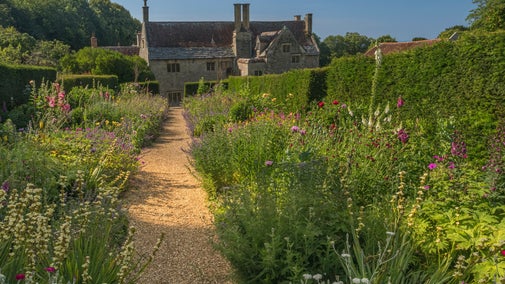Tennyson Down trail
Isle of Wight
An invigorating downland walk, with a splendid view of the iconic Needles, a 19th-century fort, a Cold War rocket test site and a monument to a Victorian poet laureate. Along the way you can refuel with a takeaway bite to eat from the Needles Old Battery tea-room.
Start point
High Down Chalk Pit car park. Grid ref: SZ324855Trail information
*This 7-mile (11km) figure-of-eight walk can be split into two shorter walks of 3 and 4 miles (4.5 and 7.5km).
**This walk includes many gates, stiles and steps. For further details, see section marked Access.
***Dogs are always welcome, but please keep them on a lead around wildlife and livestock, and take any dog waste home with you.
Take care
This is an exposed headland and the winds can be ferocious. The chalk paths can be very slippery, and the path from the car park to the Tennyson Monument is steep. Do not go near the cliff edge.
More near here
Headon Warren walk
Enjoy great views of the Needles and the mainland on the Headon Warren walk on the Isle of Wight.

Compton Bay and Downs walk
A 7.5 mile walk around Compton Bay and Afton Ridge, taking in far-reaching views and the dinosaur fossil beach.

A climb to the common at Mottistone
The views from the heather-covered Mottistone Common are the highlight of this walk, which also takes in a mysterious ancient monument.

A Mottistone meander: south to the sea
A circular walking route that takes you south from Mottistone Gardens to the coastal cliffs at Sudmoor Point.

Get in touch
Our partners

We’ve partnered with Cotswold Outdoor to help everyone make the most of their time outdoors in the places we care for.
You might also be interested in
The Needles Headland and Tennyson Down Tennyson Down trail GPX file
Right-click and 'Save Link As' or ‘Save Target As’ or ‘Download Linked File As’ (depending on your browser) to download this Tennyson Down trail walk GPX file to your device, then open with your GPS program.
Walking
Explore some of the finest landscapes in our care on coastal paths, accessible trails, woodland walks and everything in between. Find the best places to walk near you.

Mottistone Gardens and Estate
Enchanting gardens set in a sheltered valley and surrounded by rolling downland

Compton Bay and Downs
One of the Island's favourite beaches and biggest expanses of open downland

Cotswold Outdoor: our exclusive walking partner
Learn about the National Trust’s ongoing partnership with Cotswold Outdoor. Find out how they help us care for precious places and the exclusive discount available for National Trust supporters.

Follow the Countryside Code
Help to look after National Trust places by observing a few simple guidelines during your visit and following the Countryside Code.

Staying safe at National Trust places
The special places in National Trust care sometimes come with a few risks for visitors, be it coastline or countryside. Find out how to keep safe throughout your visits.

Walking on the Isle of Wight
From discovering dinosaur fossils on a walk at Compton Bay and Downs to the secluded creeks and waterways of Newtown National Nature Reserve, find out where to go for the best walks on the Isle of Wight.




